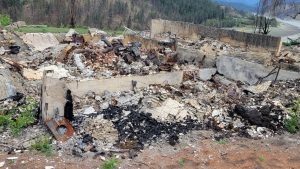British Columbia is enhancing its construction sector by including 25 new occupations in the British Columbia Provincial Nominee Program (B.C. PNP), which started Nov. 16.
This change in policy reflects the province’s response to the urgent need for skilled labour in the construction industry.
The targeted occupations encompass a wide range of essential trades such as welders, plumbers and electricians. These inclusions represent a welcome addition to the province’s other areas of focus such as early childhood educators, tech, health care occupations, veterinarians, animal health technologists and veterinary technicians.
For Chris Atchison, president of the British Columbia ��������ion Association (BCCA), it’s definitely a good news story, but is it enough?
“No,” he says. “Is it an appreciated move? Absolutely. I talk to my counterparts in other provinces and they wish their PNP systems would be progressive in advancing in the way that B.C. is under the direction of our ministry of municipal affairs.”
In the first round of this expanded focus, held on the same day as the announcement, 12 invitations for permanent residency were sent out under various provincial skills immigration categories and their express entry counterparts. Building on this initial effort, the province plans to issue an additional 12 invitations. While the initial steps are promising, industry experts like Atchison believe more is needed.
“We need way more than that,” says Atchison. “But it’s also 24 more than we had any month previous. So it’s a step in the right direction. Again, it’s a message to newcomers, it’s a message to industry that the government is paying attention.”
Echoing this sentiment, Dr. Dave Baspaly, president of the Council of ��������ion Associations, agrees it’s a great signal from the government.
“We’ve got a massive projected skill shortage over the next five years,” says Baspaly. “And it is nice to see that we’re recruiting more sharp minds to be able to do the good work that has to happen in our industry.”
��
Trades feeling the labour crunch
Among the trades getting hit hard by the labour shortage in B.C. are the electrical contractors.
“There’s an enormous amount of demand for electrical workers in British Columbia,” explains Matt MacInnis, president of the Electrical Contractors Association of BC. “Contractors across the province are just barely able to meet that demand right now.”
And while MacInnis agrees with Atchison and Baspaly that this is definitely a positive move, he doesn’t think this will have any meaningful impact specifically on the electrical trades.
He points to the unique accreditation challenges that new electricians face in B.C., particularly for those from other parts of the world. Their qualifications might not be immediately recognized, necessitating a period of adaptation to local codes like the B.C. and Canadian electrical standards. Additionally, if their training doesn’t align with the Red Seal program, it can be difficult to assess their skills.
“Not to be flippant, but as I always say, ‘You can’t have an electrification policy without electricity or electricians,’” says MacInnis. “And I think right now we need a little bit more of both, so I’d encourage the province to increase our training capacity and then also put resources in place to both attract people to the trades and support those who are entering the trade as well.”
��
Importance of closing the gap
The targeted immigration strategy aims not only to fill immediate gaps but also to lay a foundation for long-term sustainability and development in the construction industry.
The construction industry in British Columbia, currently the top employer in the province’s goods sector and accounting for 10.3 per cent ($27 billion) of its GDP, has been facing a severe workforce shortage.
Underpinning these concerns are stark statistics from the BCCA’s Fall 2023 Industry Stat Pack and an accompanying economic report.
Despite a robust demand, the industry is hampered by a declining workforce.
The province has seen an eight per cent drop in tradespeople over three years, with the average company size shrinking by 10 per cent to about 6.24 workers.
The sector’s woes are compounded by rising costs, decreased commercial demand and challenges in procurement standards and payment practices.
As Atchison points out, these difficulties, stemming from the workforce shortage, not only impact daily operations but also challenge the sector’s overall capacity to meet increasing construction demands.
When companies are struggling to find enough workers, they may be less inclined or able to bid for new projects, leading to fewer choices for clients and potentially higher prices.
“Not having that assured source of labour drives up costs, plain and simple, and drives down competition, which isn’t ideal,” he says. “We want competition in this industry. This industry thrives on competition.”











Recent Comments
comments for this post are closed